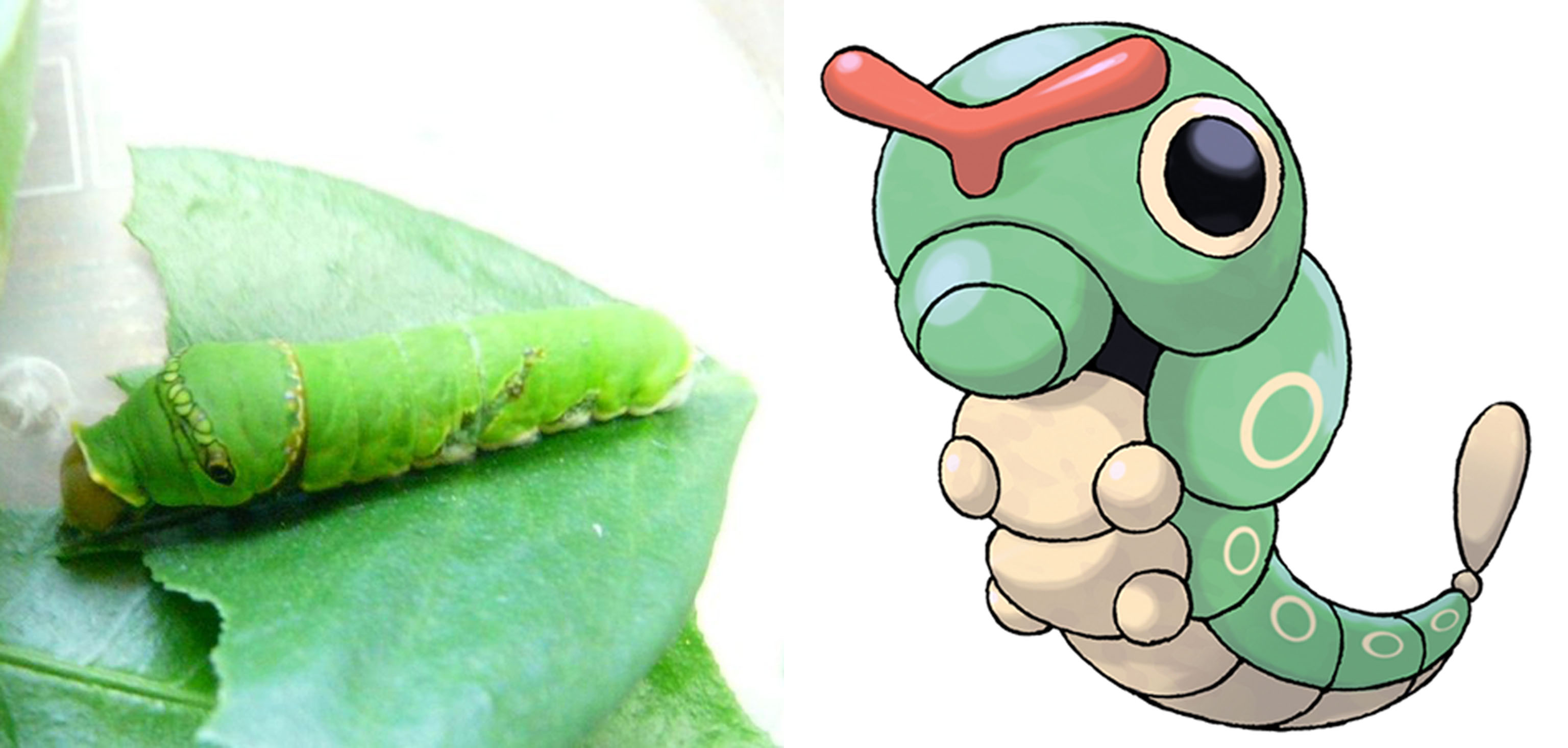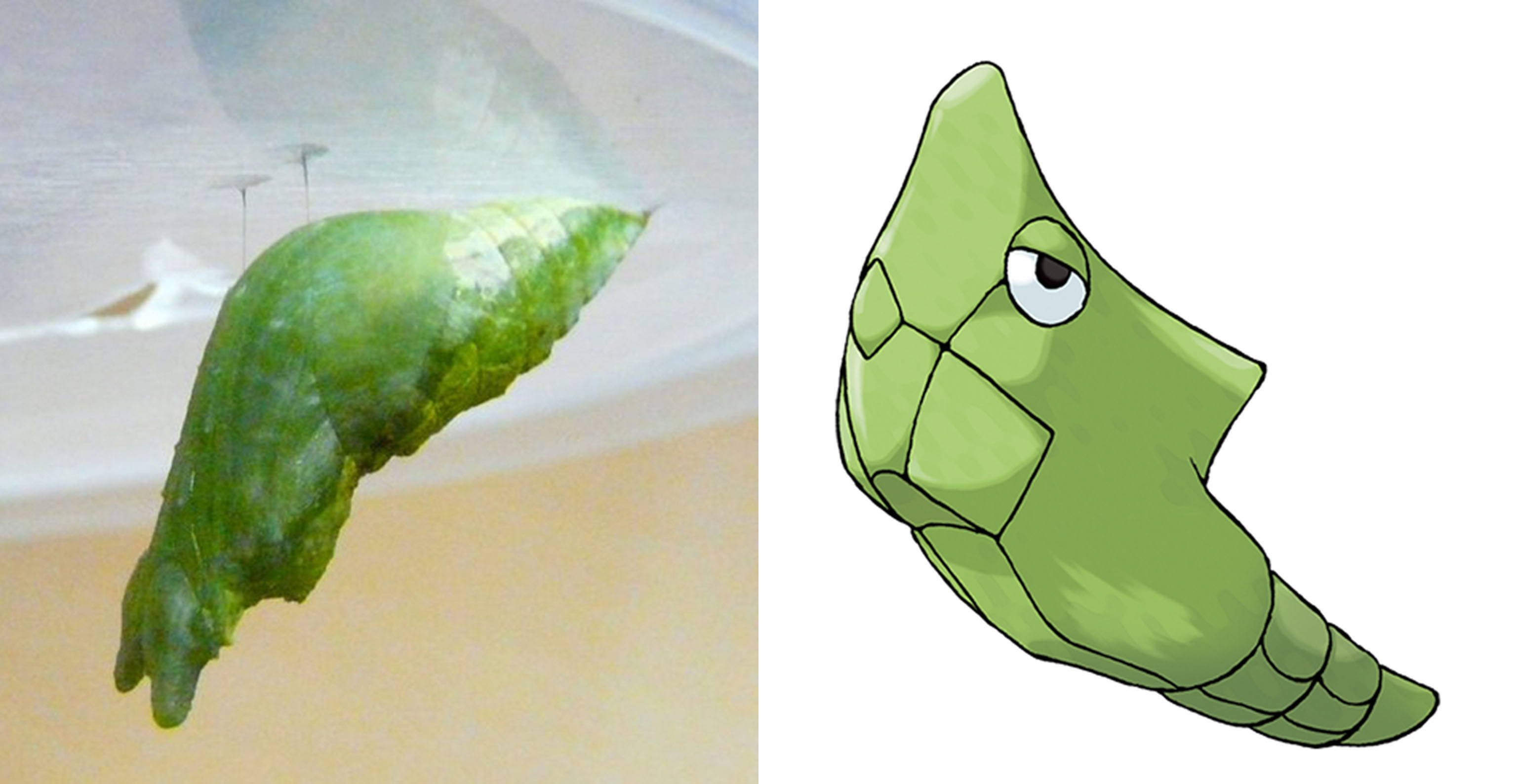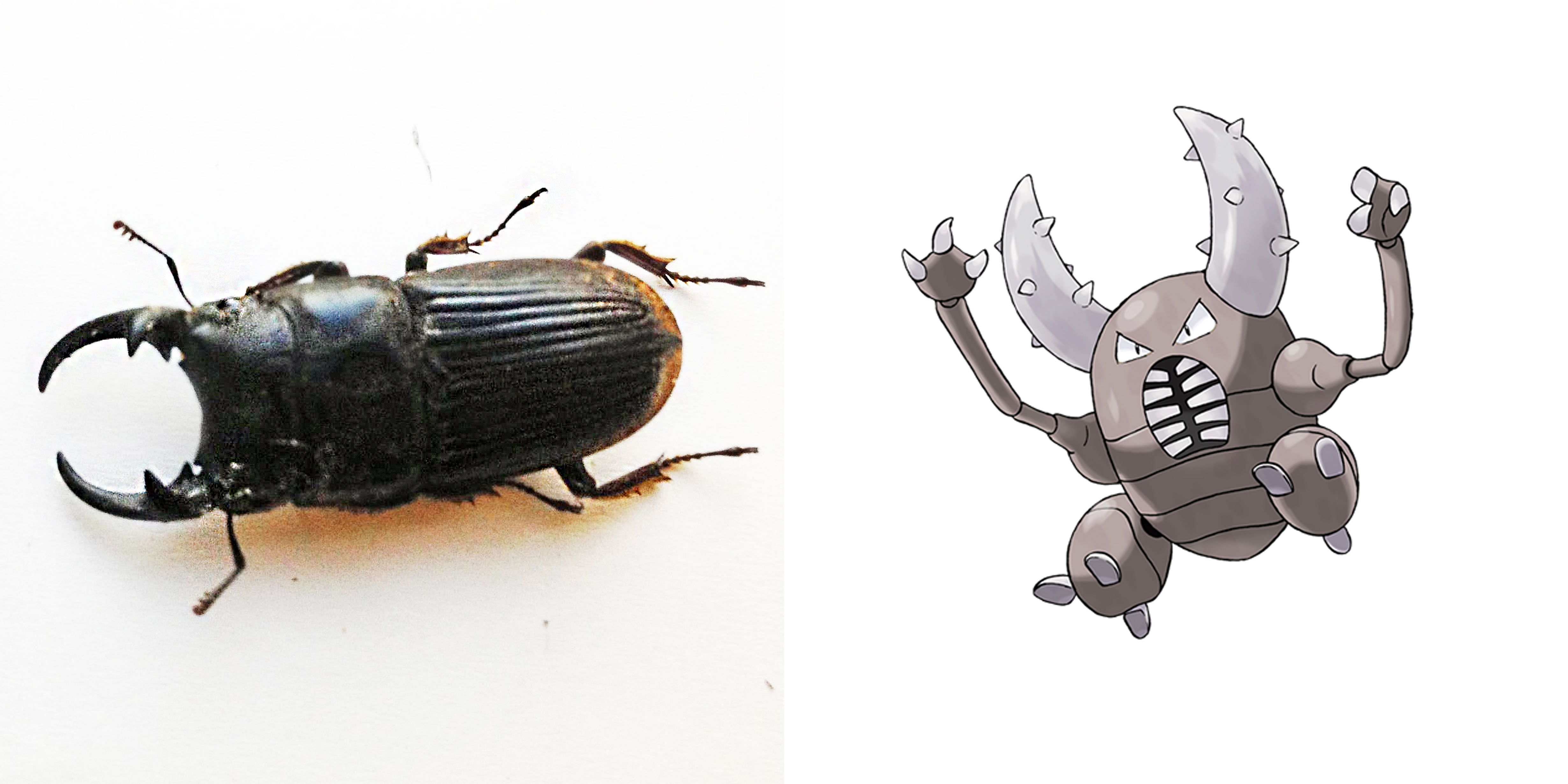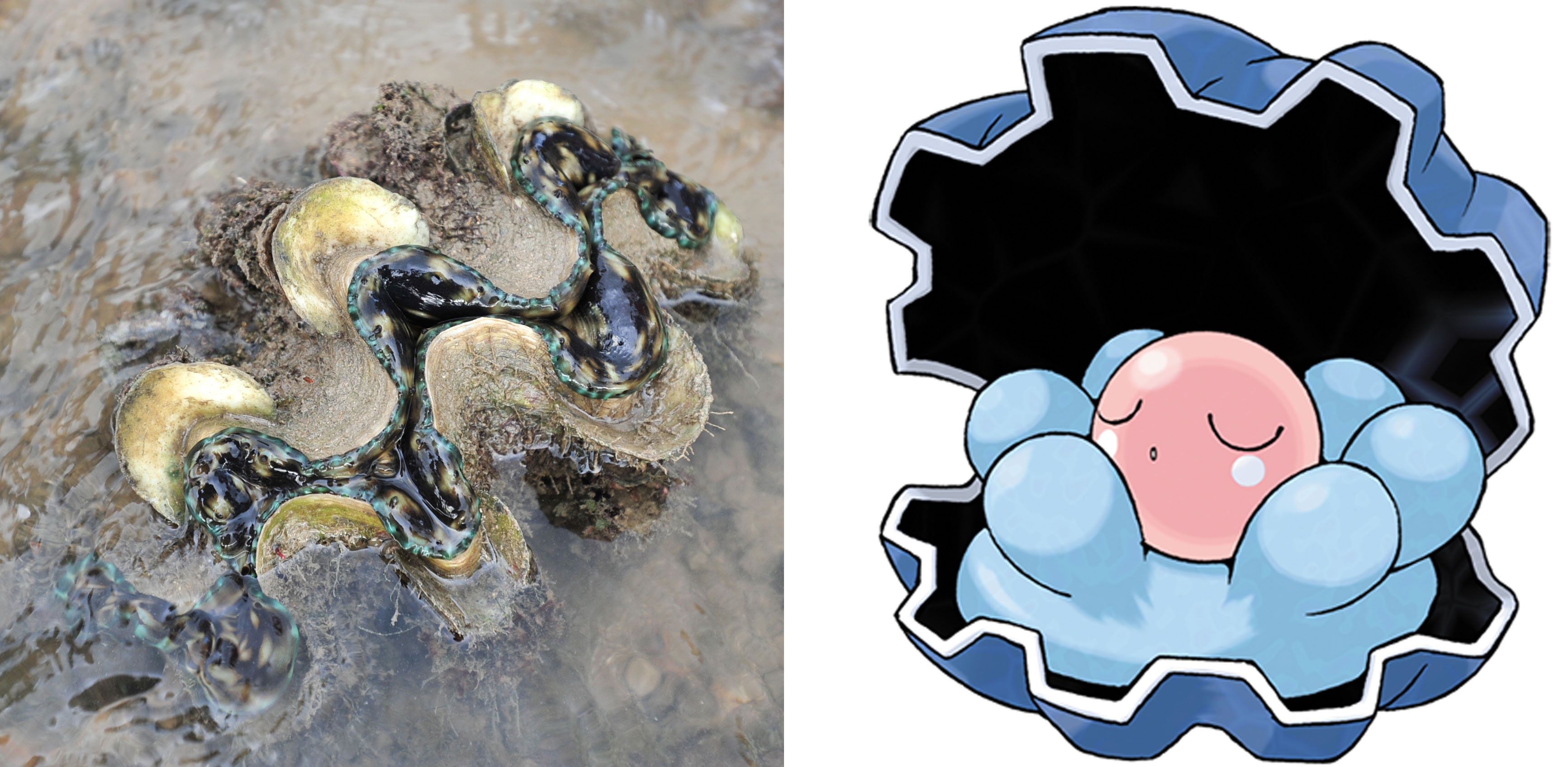

COMMON MORMON
Papilio polytes
This butterfly can be found in the forests and urban areas of Singapore, according to butterflycircle.com. Its caterpillar (top) and pupa (above) stages resemble the Pokemons Caterpie (top) and Metapod (above). And just like its virtual avatar, the caterpillar has two red "horns" (actually a fleshy organ called osmeterium) which it can shoot out if it is threatened.

STAG BEETLE (above)
Aegus sp.
The Pokemon Pinsir (above right) looks like a stag beetle, which beetle researcher Sean Yap has seen in Singapore's nature reserves. There are about 400,000 described beetle species worldwide but, as they are relatively understudied here, a figure is not yet available for Singapore. However, Mr Yap is trying to establish a baseline of local beetles for his final-year project at the National University of Singapore.

SUNDA PANGOLIN ( above)
Manis javanica
Like the Pokemon Sandslash (above right), the Sunda pangolin - which is native to Singapore - has formidable claws, but these are not used for battle. Pangolins use their claws to dig for food and create burrows, which aerate the soil in the process. This introduces oxygen and nutrients to the soil and benefits the roots of plants and animals that live underground. While scales are commonly found on reptiles and fish, pangolins are the only mammals in the world that have them. They use their scales as a defence mechanism. When attacked by predators, such as leopards, they curl up into a ball so that the hard keratin envelops all of their soft parts. Unfortunately, this does not protect them from humans, who can simply pick them up.

ASIAN GIANT MANTIS (above)
Hierodula patellifera
This mantis, similar to the Pokemon Scyther (above right), is one of the more common mantids in Asia. Females are larger than males as "they need extra booty space to carry the eggs", says Mr Yap. In the game, the females have larger abdomens too.

GIANT CLAMS (above)
Tridacna sp.
The Pokemon Clamperl (above right) looks like the giant clam that can be found here. For more about these animals, read researcher Neo Mei Lin's blog post at www.meilin5giantclam. wordpress.com/factsheet-on-giant-clams/
Audrey Tan

